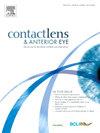低强度光治疗和强脉冲光治疗睑板腺功能障碍。系统回顾和荟萃分析。
IF 3.7
3区 医学
Q1 OPHTHALMOLOGY
引用次数: 0
摘要
背景:睑板腺功能障碍(MGD)是干眼病的主要原因,影响全球三分之一以上的人口。此病与眼部不适、视觉质量下降和生活质量有关。据报道,强脉冲光(IPL)疗法和低水平光疗法(LLLT)等新疗法可用于难治性MGD的治疗。然而,尚无系统综述探讨这两种疗法联合使用的效果。方法:检索Medline、Embase和CENTRAL数据库中有关LLLT + IPL治疗MGD的文章。采用单手段进行荟萃分析以评估临床终点。结果:12项研究分析显示,在MGD患者治疗后≤3个月,LLLT + IPL治疗可显著降低眼表疾病指数评分(MD: -22.8, 95% CI: -29.1 ~ -16.5, I2 = 97.5%, p 2 = 98.6%, p 2 = 0.0%, p = 0.001)。在治疗后≥6个月的终点,这些改善在敏感性分析中得以持续。虽然睑板腺面积损失的百分比(n = 4, MD: - 3.8%, 95% CI: - 7.2%至- 0.4%,I2 = 40.0%, p = 0.031)被报道显着减少,但在两项研究中,在治疗后≥6个月的终点(n = 2, MD: 5.9%, 95% CI: 1.8%至10.0%,I2 = 0.0%, p = 0.005)未发现这种情况持续。结论:本荟萃分析为支持LLLT + IPL治疗MGD的临床疗效提供了定量证据。未来的研究应评估其长期安全性和有效性,并与其他治疗方法进行比较。本文章由计算机程序翻译,如有差异,请以英文原文为准。
Low-level light therapy and intense pulse light therapy in meibomian gland dysfunction. A systematic review and meta-analysis
Background
Meibomian gland dysfunction (MGD) is a leading cause of dry eye disease, affecting over a third of the global population. This disease is associated with ocular discomfort, reduced visual quality, and quality of life. Novel treatments like Intense Pulse Light (IPL) therapy and Low-Level Light Therapy (LLLT) have been reported to be useful in refractory MGD treatment. However, no systematic review has explored the utility of combining these two therapies.
Methods
Medline, Embase, and CENTRAL databases were searched for articles on LLLT + IPL therapy in MGD. A meta-analysis of single means was conducted to assess clinical endpoints.
Results
Analysis of 12 studies showed that LLLT + IPL therapy in MGD patients led to a significant decrease in Ocular Surface Disease Index score (MD: −22.8, 95 %CI: −29.1 to −16.5, I2 = 97.5 %, p < 0.001), and a significant increase in both Tear Break-up Time (MD: 2.2 s, 95 %CI: 0.9 s to 3.4 s, I2 = 98.6 %, p < 0.001) and Schirmer test (MD: 1.5 mm, 95 %CI: 0.6 mm to 2.5 mm, I2 = 0.0 %, p = 0.001) at ≤ 3 months post treatment. These improvements were sustained in a sensitivity analysis at endpoints ≥ 6 months post treatment. While the percentage of loss of meibomian gland area (n = 4, MD: −3.8 %, 95 %CI: −7.2 % to −0.4 %, I2 = 40.0 %, p = 0.031) was reported to be significantly reduced, this was not found to be sustained at endpoints ≥ 6 months post treatment (n = 2, MD: 5.9 %, 95 %CI: 1.8 % to 10.0 %, I2 = 0.0 %, p = 0.005) in two studies.
Conclusions
This meta-analysis provides quantitative evidence supporting the clinical efficacy of LLLT + IPL therapy in MGD. Future research should evaluate its long-term safety and efficacy and compare it with alternative treatments.
求助全文
通过发布文献求助,成功后即可免费获取论文全文。
去求助
来源期刊

Contact Lens & Anterior Eye
OPHTHALMOLOGY-
CiteScore
7.60
自引率
18.80%
发文量
198
审稿时长
55 days
期刊介绍:
Contact Lens & Anterior Eye is a research-based journal covering all aspects of contact lens theory and practice, including original articles on invention and innovations, as well as the regular features of: Case Reports; Literary Reviews; Editorials; Instrumentation and Techniques and Dates of Professional Meetings.
 求助内容:
求助内容: 应助结果提醒方式:
应助结果提醒方式:


